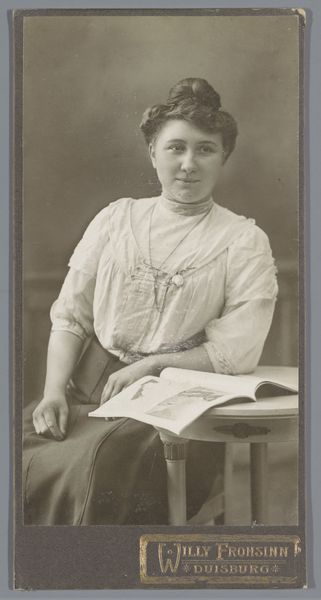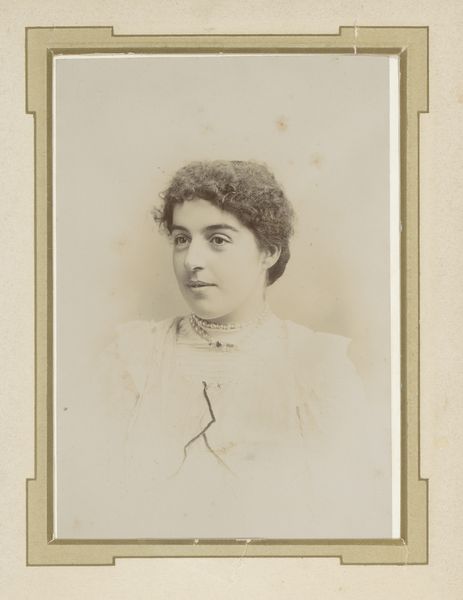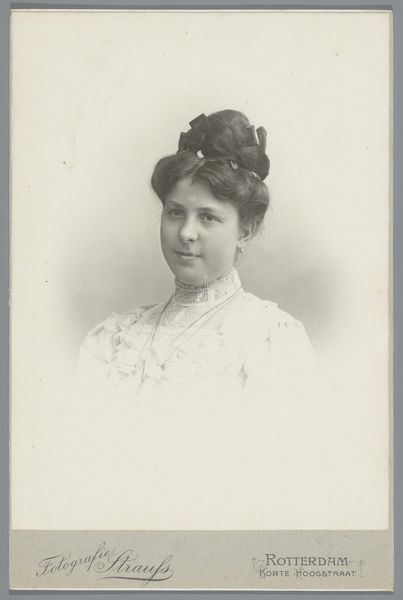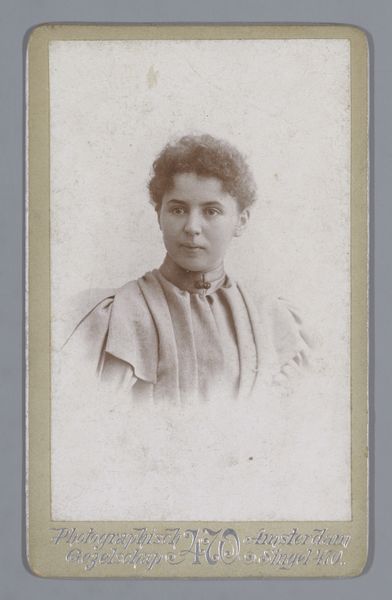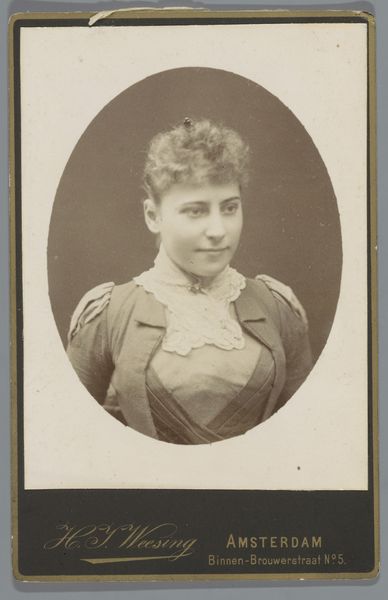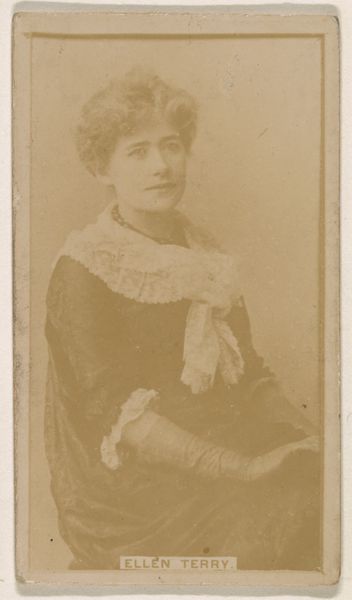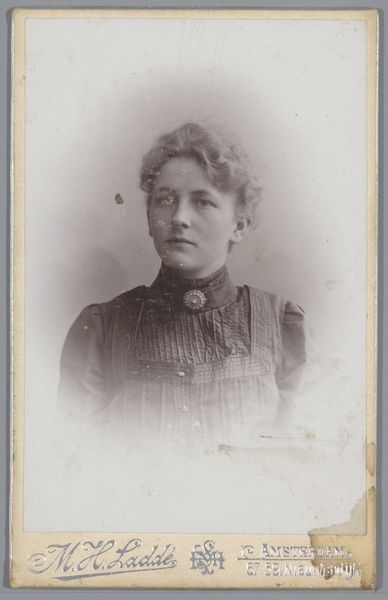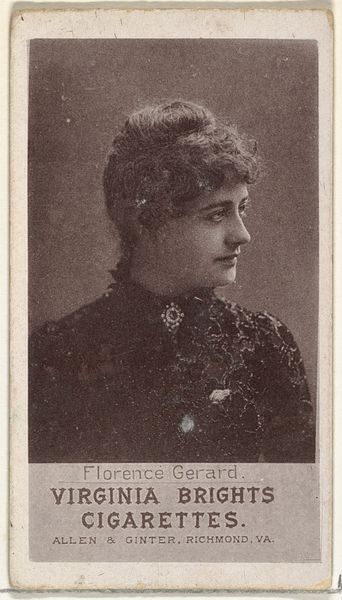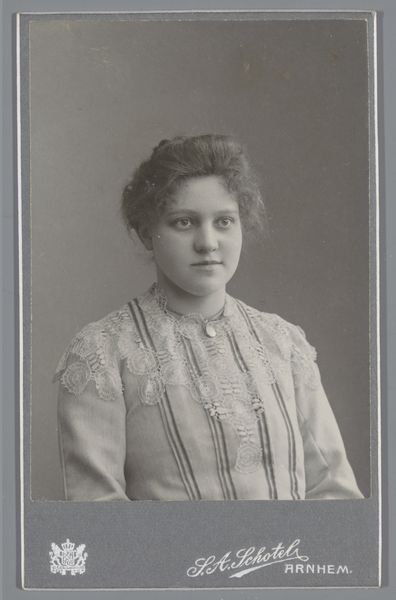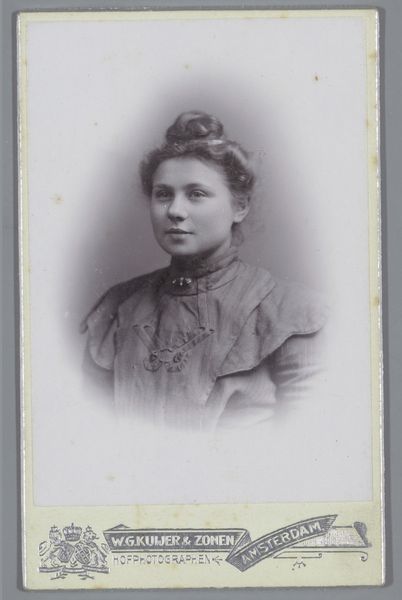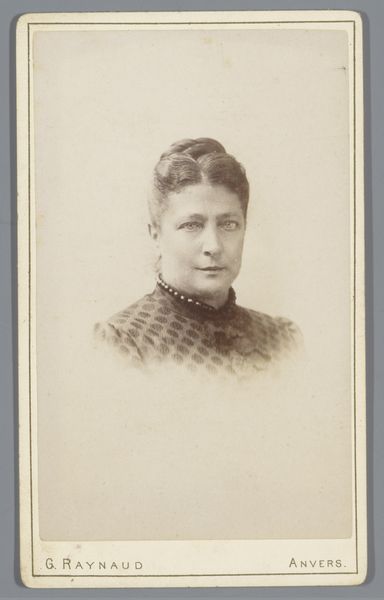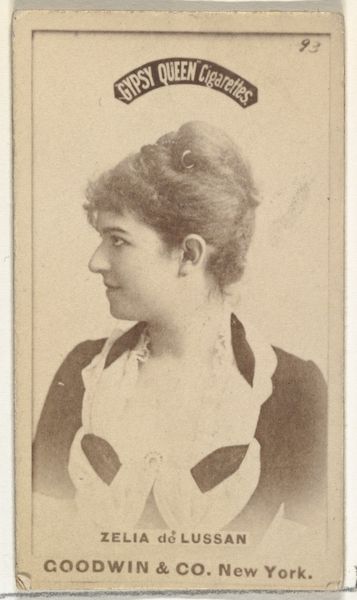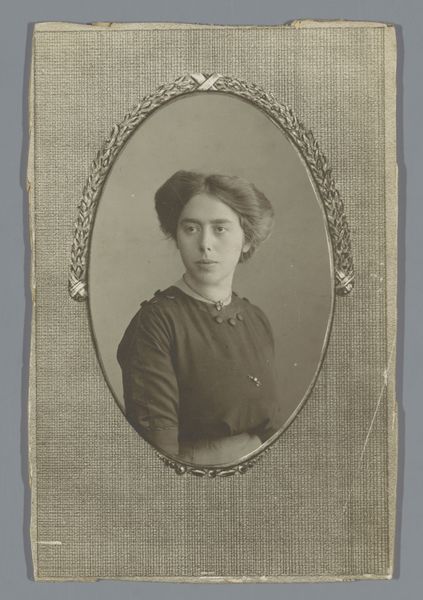
photography
#
portrait
#
photography
#
historical photography
#
historical fashion
#
intimism
Dimensions: height 141 mm, width 99 mm
Copyright: Rijks Museum: Open Domain
Curator: Here we have "Portret van een onbekende vrouw," or "Portrait of an Unknown Woman," a photographic work created sometime between 1910 and 1942 by Cornelis Leenheer Sr. Editor: The sepia tone immediately lends the photograph a sense of nostalgic yearning. I notice the subject's serene gaze, directed just off-camera; it evokes a sense of quiet strength and reserved confidence. Curator: Looking closely, one can see the studio mark at the bottom, providing crucial context. This wasn’t just point-and-shoot; there was a process, a business even, of creating these images. These photographs documented not just likenesses, but aspirations and self-fashioning within specific social strata. Editor: Absolutely. And that dress, with its lace detailing and high neckline, speaks volumes about the sartorial expectations placed on women of the time. I’m curious about the significance of the pendant she’s wearing; that initial "S" suggests an emblem of belonging. Could it signal affiliation to a particular social circle, religious group, or perhaps a profession? Curator: That's precisely the kind of detail I find compelling. How did access to certain materials – photographic paper, the developing chemicals – shape who could be seen, represented? Was the subject a part of Amsterdam’s upper-middle class, commissioning the portrait to demonstrate their status? How did that process play into notions of access and privilege during a volatile period in the early 20th century? Editor: This woman's calm demeanor in the face of looming social upheaval offers an interesting narrative in itself. It reflects resilience during uncertain times and makes one wonder if this portrait transcends its purpose to tell a larger historical story about gender and identity. Curator: The craft involved matters too; Leenheer wasn’t just taking a snapshot; he was carefully manipulating light, chemicals, composition, to create this object that had intrinsic material value, circulated among the family for generations perhaps. Editor: Agreed. I appreciate how the image makes us reflect on untold stories, societal structures, and even how history immortalizes us, or leaves us unnamed in an archive. Curator: Ultimately, by studying photographic material we reveal larger contexts of production, labor, and societal aspiration of early twentieth century portraiture. Editor: The picture has definitely triggered so many threads to consider about individual experience amid greater collective movements of early 20th-century society!
Comments
No comments
Be the first to comment and join the conversation on the ultimate creative platform.
